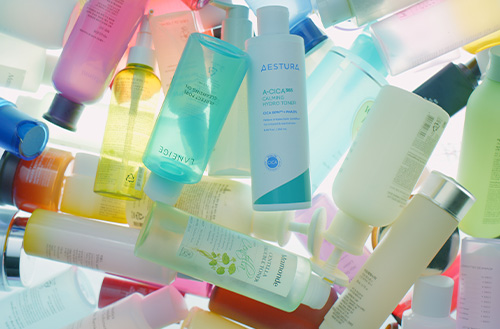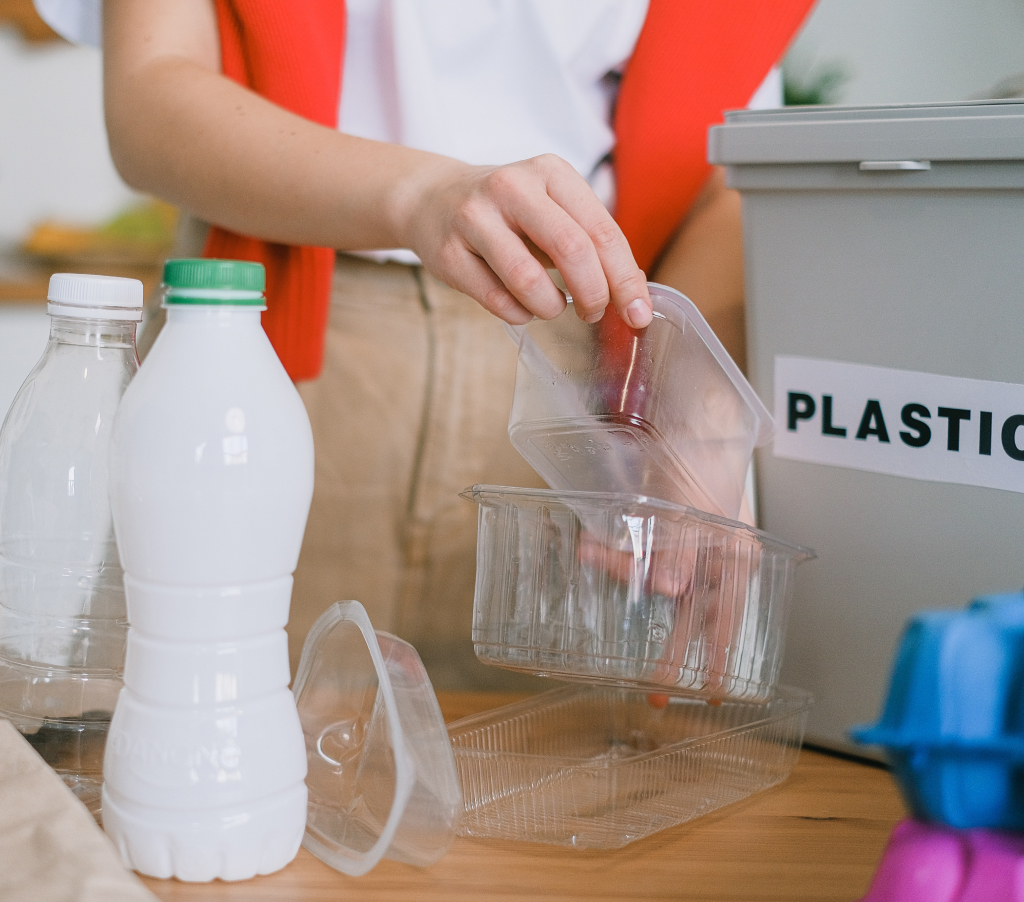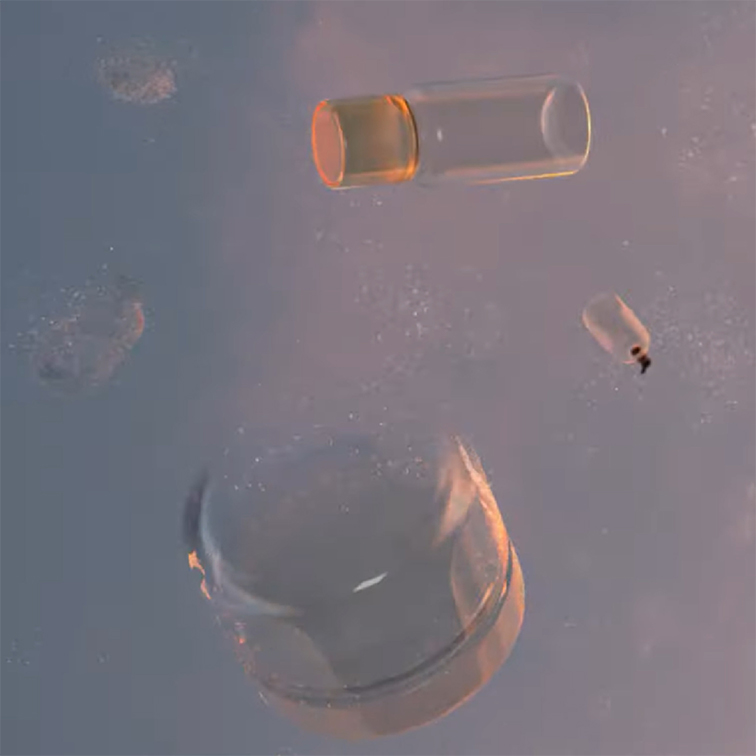

#Staff Column
2023.05.02
The Packaging Diet

Columnist | Introducing the columns written by member of Amorepacific Group
Green Packaging
Part 1. The Packaging Diet
Part 1. The Packaging Diet

Columnist Lee Chankyu
Amorepacific Package Research Team
Amorepacific Package Research Team
As they say, ‘out of sight, out of mind.’ But give it a slight twist, and it could mean if you think about something often enough, it will grow on you. Amid the rise in the number of green products and the ESG craze, consumers are becoming increasingly interested in going green. This spike in interest is sure to lead to an increase in the production of green products, which will in turn lead to even more interest. ‘Greenness’ entered the scene a long time ago, but it was not prioritized as manufacturers and consumers used to put a greater emphasis on efficiency. These days, it’s impossible to talk about manufacturing without thinking about its impact on the environment. That said, let’s delve into the significance of this green movement for packaging materials. The first of the two articles will focus on what I would like to call the packaging diet.
On sustainable packaging
Before we dive in, let’s first think about what ‘packaging’ means. Usually, when we say ‘packaging,’ we think of packaging for products. But oddly enough, packaging can also be applied to us human beings. What does packaging truly mean? To me, packaging entails making something look more appealing without changing its nature. So, it is understandable that, when packaging is excessive, to the extent that it distorts the nature of the thing being packaged, it upsets consumers. Packaging materials these days are flashy and colorful. They almost remind me of signboards that, despite being more ostentatious in design than their past counterparts, are often neglected. However, a positive change is taking place; with an increasing consumer interest in the environment, packaging materials are becoming ‘greener.’
 < Sephora, a multi-brand cosmetics store, at the Parnas Mall (left) / Amorepacific’s Refill Station in Jayang-dong (right) >
< Sephora, a multi-brand cosmetics store, at the Parnas Mall (left) / Amorepacific’s Refill Station in Jayang-dong (right) > So, what is ‘green?’ There are a few components that define ‘greenness,’ but of those, one that is never left out is ‘sustainability.’ Practices that allow individuals and communities to be sustainable fall into this category. On the other hand, practices that exploit finite resources or leave irreparable impacts on the environment are considered unsustainable. Green practices conducted by companies often take place within the scope of the so-called 3Rs, referring to reduce, reuse, and recycle. For the purpose of this column, we are going to look at green packaging materials from a ‘reduce’ perspective.
Packaging materials, too, need weight loss
At the end of last year, the government enacted the ‘Circular Economy Transformation Act’ and strengthened regulations and subsidies for plastic reduction. Previously, only some companies actively implemented green packaging. The newly enacted regulations, however, require all companies to reduce their use of plastic packaging materials.
The time has come for packaging materials to shed some weight, just as we go to the gym to maintain a balanced body. Entering a weight loss phase usually begins with cutting down on the excess stuff, whether it be fat or food. Similarly, weight loss for packaging materials begins with cutting down on excess plastic.
The time has come for packaging materials to shed some weight, just as we go to the gym to maintain a balanced body. Entering a weight loss phase usually begins with cutting down on the excess stuff, whether it be fat or food. Similarly, weight loss for packaging materials begins with cutting down on excess plastic.


When we first start going to the gym, we measure our BMI (Body Mass Index) to get a better idea of where our body stands. This is the case in the packaging diet as well. PMI (Packaging Mass Index) is defined as the weight of plastic packaging materials divided by the weight of the contents. For example, a PMI of 1 means that the product used 1g of plastic to package 1g of contents.
When it comes to cosmetics and household necessities, PMI can range from 0.02 to over 2 in some cases. PMI tends to be highest for makeup containers, followed by cream jars, bottles, tubes, and pouches. Pouches and tubes have a relatively low PMI, but for some small-sized products, the number can exceed 1. Of course, PMI should not be the one and only indicator used to evaluate the greenness of a product; consumers prefer different types of packaging materials and containers depending on the characteristics of the product. Therefore, when it comes to setting goals for lightweight packaging materials, multiple factors need to be taken into account, such as convenience, volume, period of use, and even production capacity. Manufacturing packaging materials with a focus on recyclability and efficiency only without addressing the wants of consumers will just end up creating more waste.
Examples of packaging diet
Glass bottles have long been associated with ‘luxury packaging.’ They can be reused or recycled. Clear, thick glass bottles are still very widely used for perfumes and high-end cosmetics. Until a few years ago, brands seemed to be competing against each other on who could make thicker glass bottles, but now, the title of the competition seems to have changed to ‘how to make lighter glass containers.’ Veresance, a world-renowned manufacturer of glass containers used for perfumes and cosmetics, has developed glass containers that weigh 20% less than the original. Being extremely delicate, glass containers tend to be more fragile the thinner they are. Therefore, making thin yet durable glass containers requires special techniques.
 < Original glass containers made by VERESANCE (left) / lightweight glass containers by VERESANCE (right) >
< Original glass containers made by VERESANCE (left) / lightweight glass containers by VERESANCE (right) > Tubes, on the other hand, are more versatile when it comes to shedding weight. Research is actively being done to make even lighter tubes. So far, thinner tubes, tubes with smaller lids, or even lid-less tubes have been introduced to the market. It must be noted, however, that thinner tubes are more prone to bursting and less ideal for storing contents for a longer period of time.
Manufacturers are constantly introducing more products with lighter packaging. For example, LANEIGE was able to reduce the weight of its makeup base container by 18%, and mise-en-scène took 40% out from the container of Morocco Argan Shampoo.
Manufacturers are constantly introducing more products with lighter packaging. For example, LANEIGE was able to reduce the weight of its makeup base container by 18%, and mise-en-scène took 40% out from the container of Morocco Argan Shampoo.
 < Lid-less lightweight container by Albea (left) / LANEIGE Skin Veil Base (middle) / mise-en-scène Morocco Argan Shampoo (right) >
< Lid-less lightweight container by Albea (left) / LANEIGE Skin Veil Base (middle) / mise-en-scène Morocco Argan Shampoo (right) > When it comes to reducing the amount of packaging materials used, reusing packaging materials is recommended more than making them lightweight. Refill stations, such as those introduced by various companies including Amorepacific, can promote refills and potentially reduce the amount of additional packaging materials to 0. However, popularizing refill stations would require them to become more accessible and to address possible issues like discontinued use.
Using refillable shampoos and detergents is one of the more widely practiced activities to reduce the amount of packaging, and it can be adopted even by consumers who do not have access to refill stations. High-concentration products offer a great alternative. Mixing high-concentration products with water not only helps reduce the amount of packaging used, but also has a fun element to it. There have been cases where the amount of packaging used was cut down by a whopping 75% compared to the original. With high-concentration products, an important factor is the compatibility between the contents and the packaging materials, which is why the only available products in the market at the moment are either low viscosity or foam-type. Hopefully, the variety will expand with the development of materials that are compatible with different degrees of viscosity.
Using refillable shampoos and detergents is one of the more widely practiced activities to reduce the amount of packaging, and it can be adopted even by consumers who do not have access to refill stations. High-concentration products offer a great alternative. Mixing high-concentration products with water not only helps reduce the amount of packaging used, but also has a fun element to it. There have been cases where the amount of packaging used was cut down by a whopping 75% compared to the original. With high-concentration products, an important factor is the compatibility between the contents and the packaging materials, which is why the only available products in the market at the moment are either low viscosity or foam-type. Hopefully, the variety will expand with the development of materials that are compatible with different degrees of viscosity.
 < Dial hand soap (left) / Replenish cleanser (right) >
< Dial hand soap (left) / Replenish cleanser (right) > Improving the make-up of packaging materials
Now, let’s talk about improving the make-up of packaging materials. Plastic is both a blessing and a curse to modern society. Before we were blessed with plastic, the types of materials we used in our lives were not only less diverse but also more recyclable and reusable, namely glass, metal, and paper. Because metal and glass are more costly and energy-intensive to manufacture, they were often recycled rather than discarded after use. Then came plastic, the cost-effective alternative. Because plastic is so inexpensive to make, it often costs less to buy new plastic materials than to recycle used plastic. However, plastic comes in various forms; different kinds of plastic may look similar, but their properties are different. Mono-material plastic containers, like water bottles, are easy to recycle, whereas plastic containers made of multiple different polymers cannot be recycled.
So the key to recycling used plastic is making sure that the plastic is made of a single kind of polymer to begin with. If we were to practice the circulation of resources, it is essential to make plastic containers using a single kind of polymer or make the different types of plastic easily separable in cases where it is inevitable to use multi-polymer plastic. Fortunately, packaging materials are becoming increasingly simpler and more recycle-friendly, with less post-processing being involved.
A good example is the new Sulwhasoo containers. Plastic parts that used to be assembled onto the glass or metal containers have been removed for greater recyclability, and more products now come in containers or lids that are made of metal only. Where it is impossible to completely do away with plastic, brands are making conscious efforts to make plastic more easily removable.
So the key to recycling used plastic is making sure that the plastic is made of a single kind of polymer to begin with. If we were to practice the circulation of resources, it is essential to make plastic containers using a single kind of polymer or make the different types of plastic easily separable in cases where it is inevitable to use multi-polymer plastic. Fortunately, packaging materials are becoming increasingly simpler and more recycle-friendly, with less post-processing being involved.
A good example is the new Sulwhasoo containers. Plastic parts that used to be assembled onto the glass or metal containers have been removed for greater recyclability, and more products now come in containers or lids that are made of metal only. Where it is impossible to completely do away with plastic, brands are making conscious efforts to make plastic more easily removable.
 < Glass containers that use less plastic (left), Pouch products use unified, olefin-based pouch materials (right) >
< Glass containers that use less plastic (left), Pouch products use unified, olefin-based pouch materials (right) > Films used on refillable pouches are a good case in point of multi-polymer plastics. These thin films have been laminated using different kinds of plastic, such as LDPE, nylon, aluminum, PET, and EVOH. Pouch products leverage the benefits of different materials so that the contents are stored and protected during distribution and use until they expire. However, these composite materials have different properties and melt at different temperatures, making them difficult to recycle. These downsides have given rise to technologies that replace multi-polymer films with recycle-friendly PE (polyethylene), which involves physically stretching PE or attaching nano-sized fine particles to its surface so that the contents are preserved longer and are not easily damaged.


Products that use pumps have also joined this movement. Pumps allow for a controlled delivery of the content. However, the government and the recycling industry have long regarded the metal springs inside these pumps as obstacles to recycling, asking companies and brands to make all-plastic pumps without the use of metal. Thanks to these initiatives and the efforts on the part of pump manufacturers in Korea, metal-free pumps have been introduced to the market, although additional technologies need to be developed for metal-free pumps to be applied to all consumer goods out there.
In this article, we have looked at different packaging materials designed to specifically reduce the amount of plastic usage. Ever since plastic was introduced, different industries have focused on developing different kinds of plastic. What’s promising is that the focus of this R&D will now shift to developing sustainable materials or mono materials that can replace composite materials. As industries evolve, it is inevitable for the market to opt for convenient pakaging materials to use. Hopefully, consumer awareness on sustainability and recycling, combined with advancement in technologies, will lead to reduced plastic usage and help us overcome its detrimental effects on the environment.
-
Like
5 -
Recommend
0 -
Thumbs up
2 -
Supporting
0 -
Want follow-up article
0





